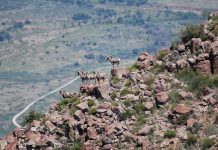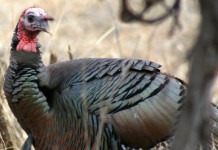The Trans-Pecos Pronghorn Restoration Project continues to be a successful initiative in improving populations that have dwindled.
The most recent relocation effort in January saw more than 100 pronghorn antelope captured from healthy populations around Dalhart and moved to an area northwest of Marfa to supplement severely depleted populations levels, according to the Texas Parks & Wildlife Department.
The relocation was coordinated among the Borderlands Research Institute at Sul Ross State University, Trans-Pecos Pronghorn Working Group, Parks & Wildlife, Parks & Wildlife Foundation and USDA-Wildlife Services.
At least 17,000 pronghorn once roamed far West Texas region, but in 2012 there were estimated to be less than 3,000. During last summer’s TPWD aerial survey more than 6,000 were calculated, according to a news release. The Trans-Pecos Pronghorn Restoration Program is a $1.4 million public-private partnership with the Parks & Wildlife Foundation. To date, $854,000 has been secured.
Translocations also occurred in January and February of 2011, 2013 and 2014. Survival of the transplanted animals was low in 2011 (20 percent), but was significantly better in 2013 (80 percent), and 2014 (70 percent), according to the release. Historic drought severely impacted survival in 2011, while good range conditions and more intensive management actions lead to much higher survival in 2013 and 2014. During the past three years, herds that received transplanted pronghorn have done well and have had above average fawn production.
At the capture site, workers take each animal’s temperature to monitor stress, along with blood and fecal samples for disease surveillance. The pronghorns also receive a mild sedative to minimize stress related to capture and transport. Ear tags are were attached for identification. Seventy of the captured pronghorn were fitted with radio collars, including 50 GPS collars programmed to collect locations every three hours. One year post-release, the GPS collars will automatically drop from the animals and be retrieved by researchers to download and analyze the GPS data, according to the release.
After processing, the pronghorn were transported by trailer to the release site northwest of Marfa.
The agencies will closely monitor the pronghorns to determine survival, reproductive productivity, fawn survival, habitat utilization and movements. This research has and will continue to define the best management practices essential in growing pronghorn populations in the Trans-Pecos region.






















